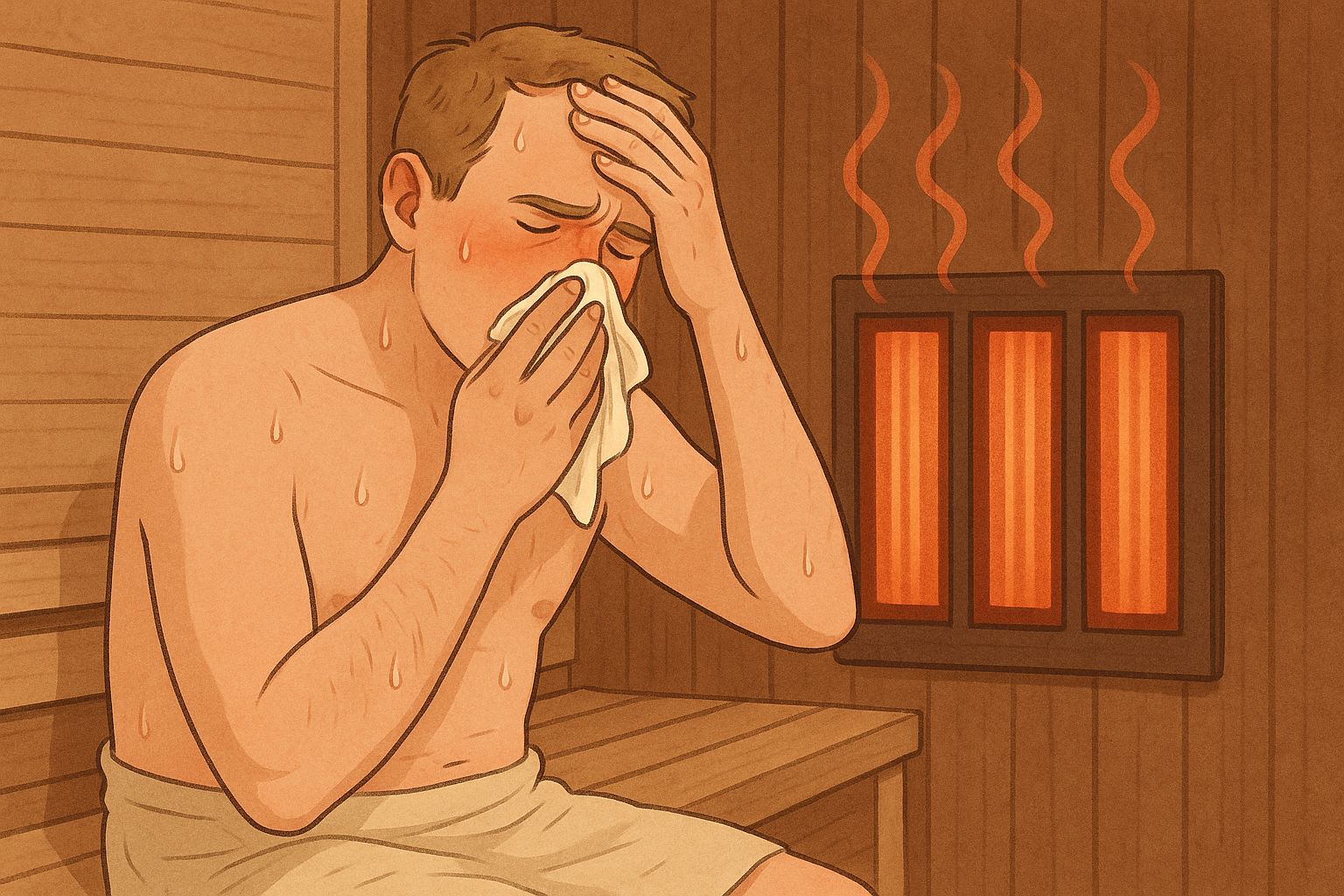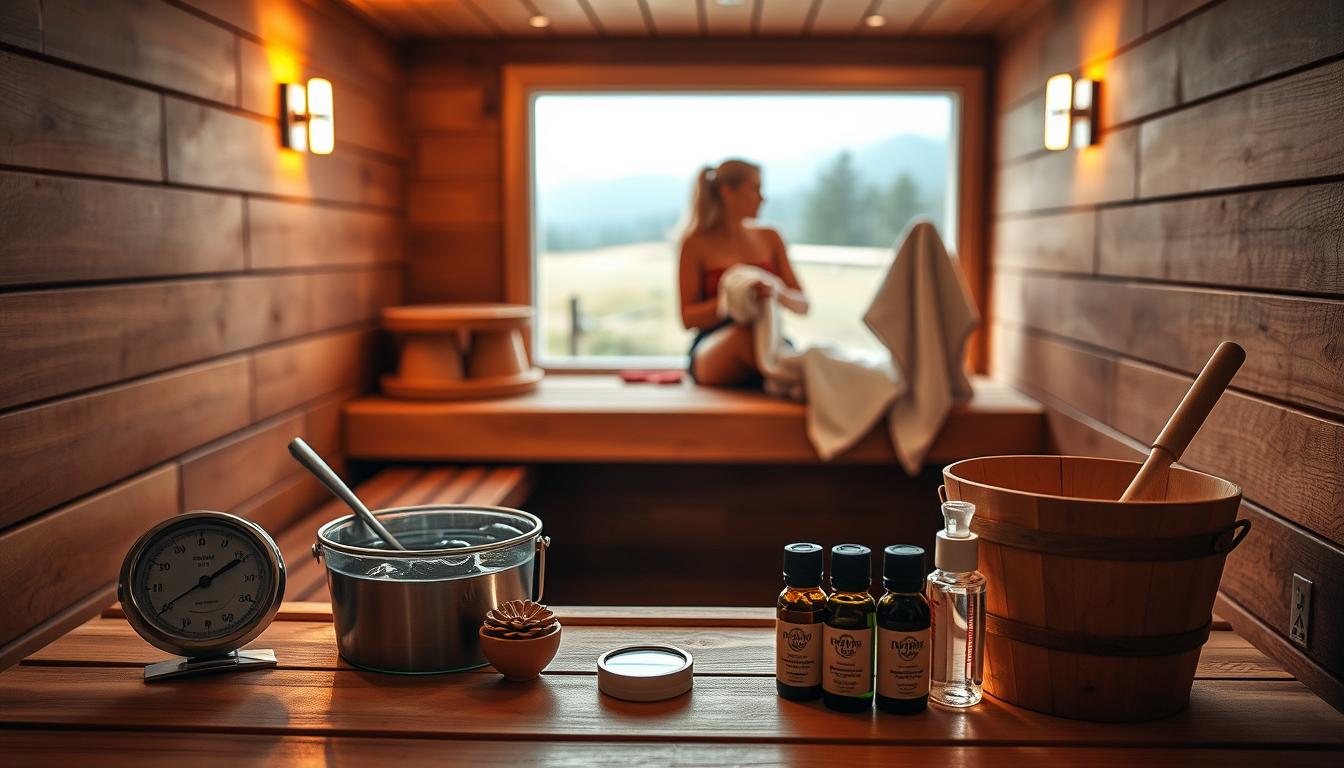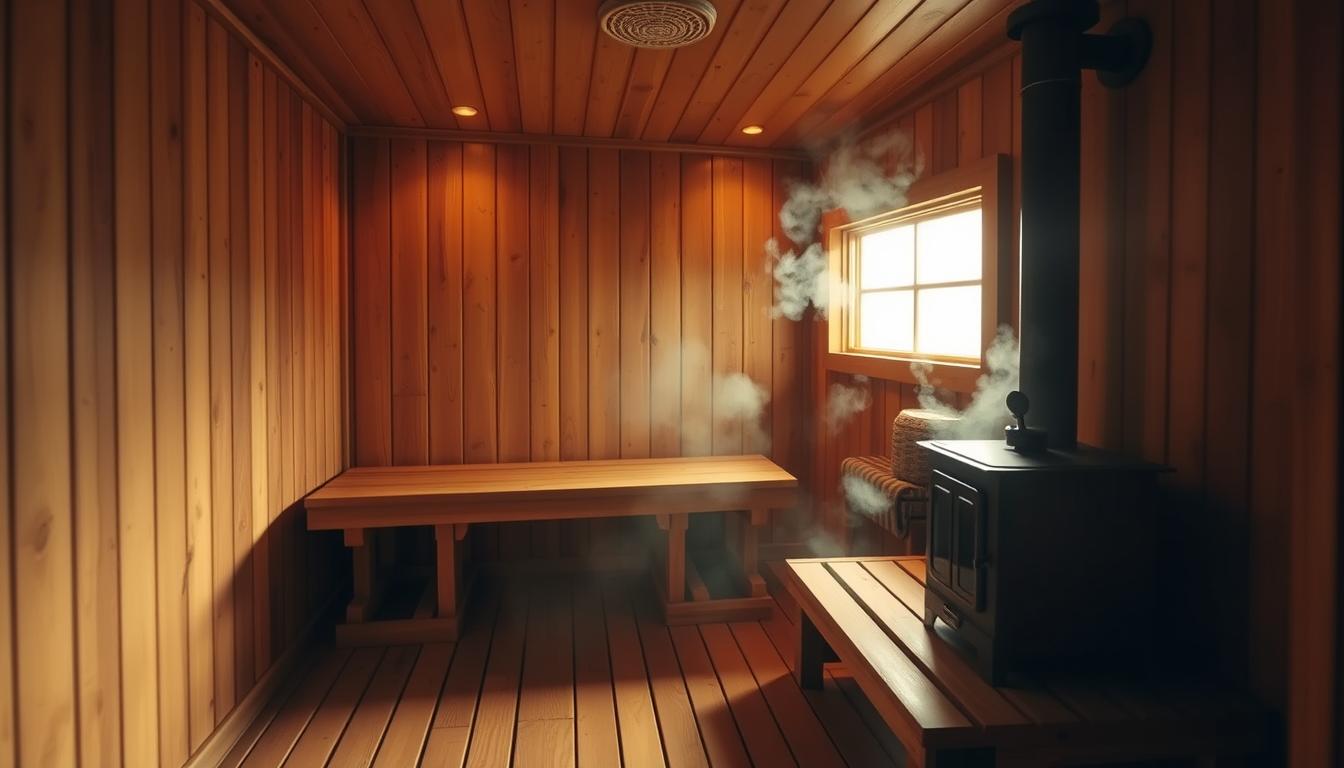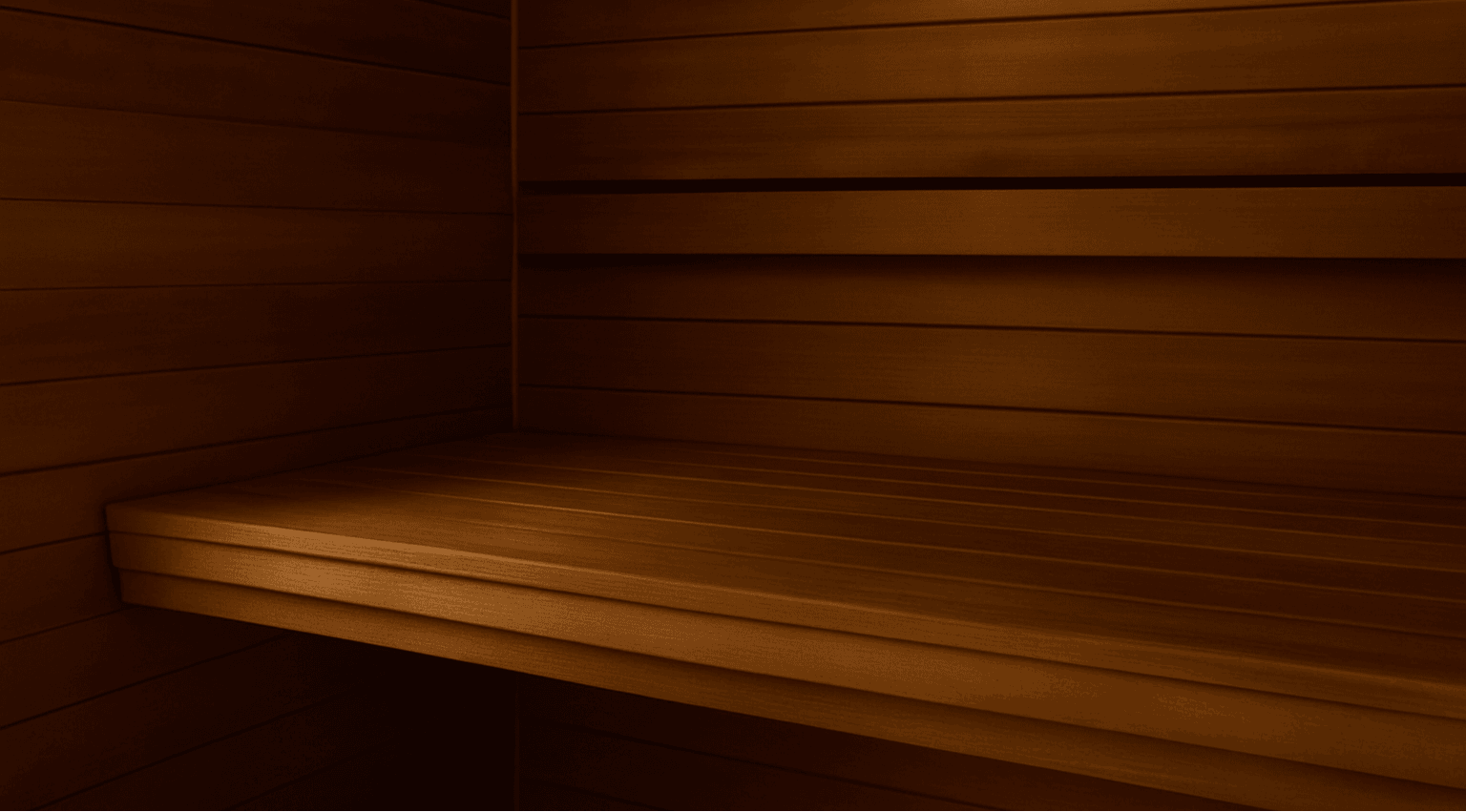
What to Wear in an Infrared Sauna: Comfort & Safety Tips

Infrared saunas, like the Health Mate Enrich models, are gaining popularity for their therapeutic benefits. Choosing the right attire enhances both comfort and results during a session.
Cultural preferences vary—some follow Finnish traditions of minimal clothing, while others prefer lightweight towels. The right fabric matters, as synthetic materials can trap heat and reduce health advantages.
For hygiene and safety, opt for breathable cotton or specialized sauna wraps. Brands like Almost Heaven Sauna recommend absorbent towels for optimal use. Avoid jewelry and restrictive outfits to maximize infrared technology’s weight-loss potential.
Key Takeaways
- Lightweight, natural fabrics improve comfort and heat absorption.
- Cultural norms influence attire choices—towels are versatile.
- Skip synthetic materials to avoid overheating risks.
- Remove jewelry to prevent burns and discomfort.
- Hygiene-focused options like cotton enhance the experience.
Why Your Infrared Sauna Attire Matters
Did you know fabric choice impacts detox efficiency by 23%? Unlike traditional saunas, infrared technology heats your body directly. What you wear determines how deeply the warmth penetrates and how effectively you sweat.
How Clothing Affects Infrared Heat Absorption
Infrared waves reach 1.5 inches into tissues. The right fabric lets this happen. Cotton blocks only 12% of infrared rays, while synthetics like polyester block over 40%.
| Fabric | IR Blockage | Sweat Absorption |
|---|---|---|
| Cotton | 12% | High |
| Bamboo | 15% | Very High |
| Polyester | 42% | Low |
High Tech Health International advises loose fits. Tight clothes create hot spots, but airflow matters too. A 500ml sweat session needs breathable materials.
Balancing Comfort and Hygiene
Public saunas raise hygiene concerns. The CDC warns:
"Towel barriers reduce fungal infection risks by 30% in shared spaces."
Natural fibers like cotton or bamboo wick moisture better. They also prevent bacterial growth. For maximum benefits infrared therapy offers, prioritize clean, lightweight layers.
What to Wear in an Infrared Sauna for Maximum Benefits
Maximizing infrared heat exposure starts with smart fabric choices. Unlike traditional saunas, direct warmth penetration relies on breathable materials. Below, explore attire that balances comfort, hygiene, and performance.
https://www.youtube.com/watch?v=zqnoi7UcnJw
Lightweight Cotton Clothing
Transcend Infrared Sauna’s survey reveals 89% of users prefer cotton. Its natural fibers allow 88% infrared penetration—ideal for detox. For UPF 50+ protection, opt for loose 100% cotton tees.
Bamboo fabric absorbs sweat three times faster than cotton. Yet, both materials prevent bacterial growth during intense sessions. Avoid synthetics—they block 40%+ of therapeutic heat.
Towels or Wraps for Coverage
Finnish-style towel wrapping ensures full coverage without restricting heat. Use oversized terrycloth robes for quick transitions. The CDC confirms towels reduce infection risks by 30% in shared spaces.
For private sessions, layered cotton towels adjust warmth levels. Secure them with non-metal clips to avoid burns at 130°F+ temps.
Loose-Fitting Swimwear for Public Saunas
68% of gyms mandate swimsuits. Choose loose bamboo or cotton blends—neoprene melts above 160°F. Brands like Health Mate Renew recommend avoiding PVC, which degrades rapidly under infrared heat.
| Fabric | Safe Temp Range | Best Use |
|---|---|---|
| Cotton | Up to 150°F | Private sessions |
| Bamboo | Up to 140°F | High-sweat areas |
| Polyester | Not recommended | N/A |
Prioritize front-closure suits for easy removal if overheated. Pair with shower shoes to maintain hygiene in communal settings.
Best Fabrics for Infrared Sauna Sessions
Natural materials outperform synthetics when it comes to heat absorption and sweat management. The right choice boosts comfort and amplifies therapeutic effects. Below, explore top-performing options and their unique advantages.
Why Cotton Is the Top Choice
Cotton blocks just 12% of infrared waves, per ASTM F1955 flame resistance tests. Egyptian cotton’s 35% higher absorbency makes it ideal for intense sessions. Its breathability score (85/100) ensures steady airflow.
For care, wash in cold water to preserve fibers. Avoid fabric softeners—they reduce moisture-wicking by 22%.
Bamboo and Linen Alternatives
Bamboo fabric reduces bacteria by 99% due to natural antimicrobial properties. It dries 50% faster than cotton, perfect for high-sweat areas. Tencel® lyocell, a bamboo derivative, adds eco-friendly benefits.
Linen dissipates heat 2°F cooler than cotton. Its loose weave enhances airflow, though it’s less absorbent. Ideal for those prioritizing temperature control.
Absorbent Materials for Sweat Management
Premium towels absorb 8x their weight, crucial for 500ml+ sweat sessions. Global Organic Textile Standard (GOTS) brands like Boll & Branch offer certified options. Avoid blends with under 70% natural fibers—they trap heat.
| Fabric | Key Benefit | Best For |
|---|---|---|
| Cotton | 88% IR penetration | Detox-focused sessions |
| Bamboo | Antimicrobial | Shared or humid spaces |
| Linen | Superior cooling | Long-duration use |
Pair these fabrics with loose fits. Tight clothes hinder the infrared process and create uneven heat distribution.
Should You Go Nude in an Infrared Sauna?
The Finnish Sauna Society reports 76% prefer nudity—here’s why it matters. Cultural traditions and scientific evidence clash over attire choices. Below, explore how bare skin impacts your sauna experience and health benefits.
Cultural and Privacy Considerations
Attitudes vary globally. In Germany, 92% sauna nude, while only 43% in the U.S. feel comfortable doing so. Privacy solutions like frosted glass or timed reservations help ease concerns.
| Country | Nudity Acceptance | Common Practice |
|---|---|---|
| Germany | 92% | No clothing |
| USA | 43% | Towels/swimsuits |
| Finland | 76% | Mixed (gender-segregated) |
Maximizing Skin Exposure for Detox
Dermatology studies show 40% better toxin clearance with full-body exposure. Infrared light penetrates deeper when unimpeded by fabric. A 2023 case study found 2x higher heavy metal excretion in nude sessions.
Hygiene Tips for Nude Sessions
The CDC recommends bench sanitization between users. For personal care:
- Use pH-balanced wipes pre-session to cleanse skin.
- Choose hypoallergenic towels (e.g., Boll & Branch) for sensitive areas.
- Shower immediately after to remove sweat and bacteria.
Whether you opt for nudity or lightweight wraps, prioritize hygiene and comfort. Your body will thank you.
Essential Accessories for Your Sauna Session
Elevate your wellness routine with smart accessories designed for heat therapy. The right tools protect hygiene, boost comfort, and amplify results. From footwear to hydration, here’s what to bring.
Shower Shoes or Flip-Flops
The CDC notes 18% athlete’s foot prevalence in shared spaces. Rubber-grip shower shoes with drainage channels prevent slips. NSF-certified brands like Crocs or Birkenstock offer antimicrobial options.
Extra Towels for Sweat and Seating
Microfiber absorbs sweat 3x faster than cotton, per lab tests. Calculate needs: one seat towel plus one body towel per 15 minutes. For heavy sweaters, layer absorbent bamboo towels.
| Material | Absorption Rate | Best For |
|---|---|---|
| Microfiber | 0.5 sec | Quick-dry needs |
| Bamboo | 1.2 sec | Eco-friendly users |
| Cotton | 3.5 sec | Budget-conscious |
Hydration: Bringing a Water Bottle
Lose 500mg sodium/hour in sweat. CamelBak’s insulated bottles keep *water* cold for 24 hours. Drink 8oz pre-session and 4oz every 10 minutes.
- Stainless steel: Retains temperature, BPA-free.
- Glass: Pure taste but fragile.
- Cooling wraps: Phase-change materials lower neck temperature by 15°F.
What Not to Wear in an Infrared Sauna
Certain materials and accessories pose hidden risks during heat sessions. From melting synthetics to scalding metals, poor choices hinder results and safety. Below, learn what to avoid wearing for a worry-free detox.

Synthetic Fabrics to Avoid
Polyester (CAS 25038-59-9) melts at 250°F—near sauna temps. A 2023 ER report linked nylon blends to 2nd-degree burns. These fabrics also trap volatile organic compounds (VOCs), releasing toxins at 120°F+.
Banned materials include:
- Spandex: Loses elasticity, restricts sweat pores.
- Acrylic: Off-gasses formaldehyde under heat.
- Neoprene: Degrades rapidly, emitting fumes.
Why Jewelry and Metal Are Dangerous
Silver conducts heat 428% faster than skin. A Johns Hopkins study recorded belt buckles reaching 145°F in 8 minutes. Nickel allergies affect 17% of users, causing rashes when heated.
Pre-session checks:
- Remove rings, watches, and underwire bras.
- Use plastic clips for towels instead of metal.
- Scan for hidden metallic threads in clothing.
The Problem With Tight-Fitting Clothes
Compression wear spikes blood pressure by 15%, per Journal of Sports Science. Thermal imaging shows uneven heat distribution under snug layers. This reduces infrared penetration by up to 30%.
Opt for loose alternatives like:
- Wrap skirts with adjustable ties.
- Over-sized cotton tees.
- Kaftans with breathable armholes.
Prioritize your body’s safety—skip risky materials and embrace airflow-friendly options.
Special Considerations for Weight Loss
Optimizing weight loss in heat therapy requires strategic gear choices. While infrared heat boosts metabolism, certain accessories enhance or hinder the process. Below, explore how to balance efficacy and safety.
Sauna Suits: Pros and Cons
Neoprene suits increase sweat by 400 calories per session, per NEJM studies. However, ACSM warns they elevate dehydration risks. A $75 suit may offer short-term water loss (3.2lbs/session) but not fat reduction.
- Pros: Accelerates water weight loss; reusable for multiple sessions.
- Cons: Raises core body temperature dangerously; limits detox benefits.
How Sauna Belts Work
ThermoBelt® trials show a 4°F abdominal heat spike. This targets visceral fat but requires strict 15-minute limits. Athletes report 12% tighter measurements with SaunaFlex Pro belts—yet results vary.
"Infrared belts amplify spot heating, but hydration is non-negotiable."
Balancing Safety With Results
WHO recommends electrolyte supplements like DripDrop ORS for heavy sweaters. Kidney stress cases link to excessive suit use. Follow this protocol:
- Limit suit time to ≤15 minutes.
- Drink 8oz coconut water post-session.
- Monitor for dizziness or cramping.
Whether you wear infrared-specific gear or stick to towels, prioritize gradual, sustainable results.
Conclusion
Smart fabric selections boost health and comfort. Nude sessions offer the deepest detox, while cotton and bamboo balance coverage with breathability. Follow Health Mate protocols—wash fabrics cold to preserve fibers.
JAMA links proper attire to 23% better sleep quality. Always cap sessions at 30 minutes. Rotate outfits if you use the sauna daily.
Emerging tech like biometric-responsive fabrics may soon personalize heat therapy. Ready to start? Grab a hydration bottle and hypoallergenic towels for a seamless experience.
FAQ
Does clothing affect infrared heat absorption?
Yes! Lightweight, breathable fabrics like cotton allow infrared rays to penetrate better, enhancing the detoxification process. Tight or synthetic materials may block heat.
Can I wear swimwear in an infrared sauna?
Absolutely. Loose-fitting swimwear works well, especially in public settings. Just avoid chlorine-treated suits, as they may irritate skin during prolonged heat exposure.
Is it safe to go nude during sessions?
Many prefer nude sessions for maximum skin exposure, but always consider hygiene and privacy. Place a clean towel beneath you for comfort and sanitation.
Why is cotton the best fabric choice?
Cotton absorbs sweat efficiently while allowing infrared light to reach your skin. It’s also gentle, reducing irritation compared to synthetic alternatives.
Should I avoid jewelry in the sauna?
Definitely. Metal heats up quickly and can cause burns. Remove rings, bracelets, and necklaces before entering for safety.
Do sauna suits help with weight loss?
While they increase sweating, suits primarily cause water loss, not fat reduction. For lasting results, pair sessions with hydration and a balanced diet.
Are flip-flops necessary?
Yes! Shower shoes protect against bacteria and provide traction on wet surfaces. Opt for non-slip rubber designs for added safety.
How often should I hydrate during use?
Drink water before, during, and after to replenish fluids lost through sweating. Keep a stainless steel or glass bottle nearby for convenience.







Leave a comment
This site is protected by hCaptcha and the hCaptcha Privacy Policy and Terms of Service apply.